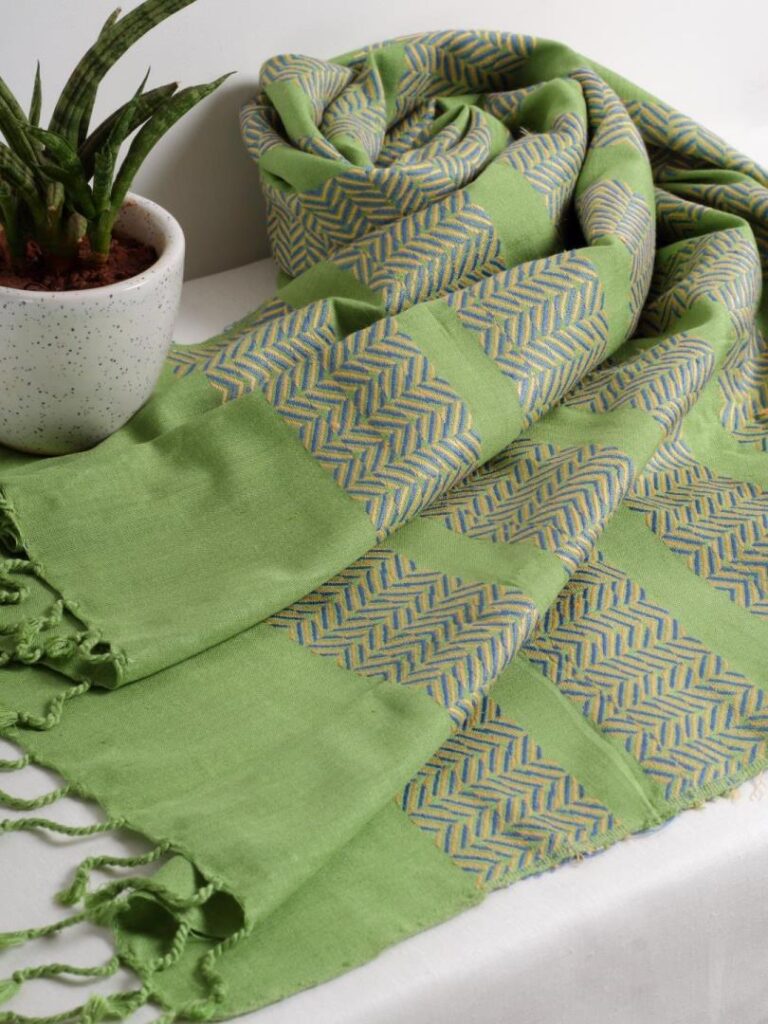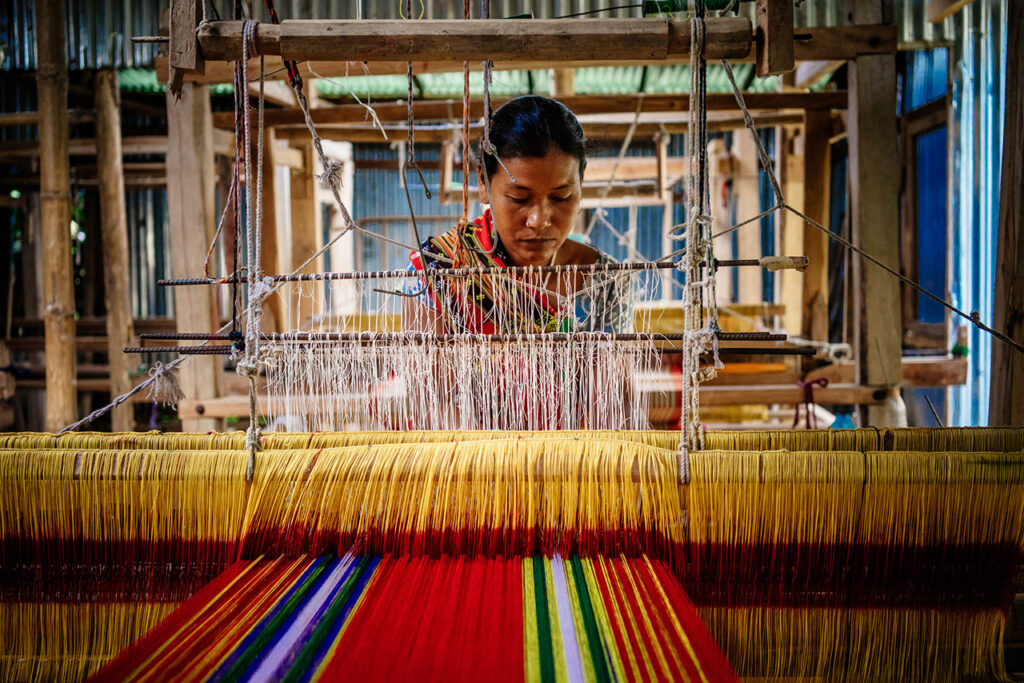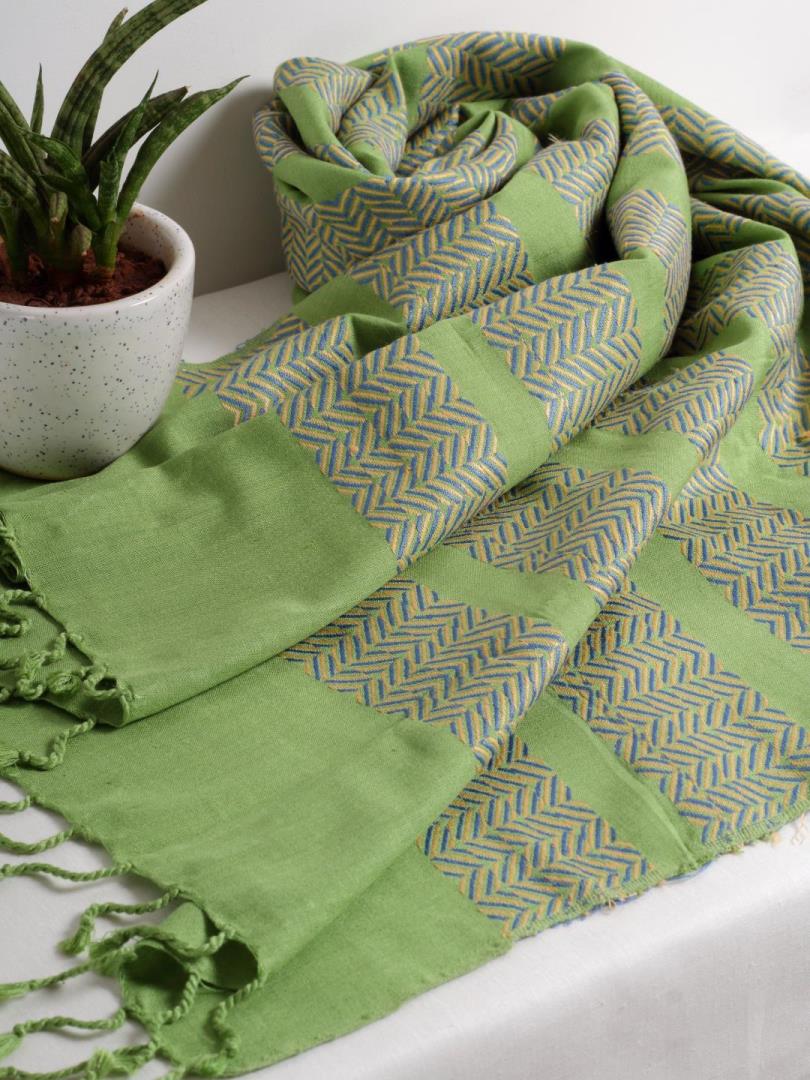
What does handloom mean?

A handloom essentially means any other loom besides the powerloom. However, in 2012 this definition was expanded to also incorporate the hybrid loom where at least one weaving process requires manual or human intervention.
There are basically three different kinds of looms that weavers use manually. They are the pit looms, stand loom and frame loom. Yarn is the ‘thread’ that is used to make the cloth or fabric. The dyeing of the yarn is an important activity before actual weaving or looming. The texture of the hand woven fabric varies from that of a mill or machine made fabric.
Difference between Handloom Fabric and Khadi
A handloom is the loom that the weavers use without any electricity. The fabric that is woven on handlooms using hand spun yarn is called khadi. On the other hand, the yarn that is spun in mills and woven on handloom is called handloom fabrics.

- The handloom industry is the second largest employment sector after agriculture in rural India.
- It has more than 4.3 million people involved either directly or indirectly.
- There are about 2.4 million looms of different kinds that power the industry.
- Almost 15% of cloth production in the country comes from the handloom industry.
- Hand woven cloths or fabrics from India account for 95% of the world’s production of hand woven fabric.
- The handloom industry also has a flourishing export market. The export of handloom products in 2019 was at a value of US $ 343.69 million.

